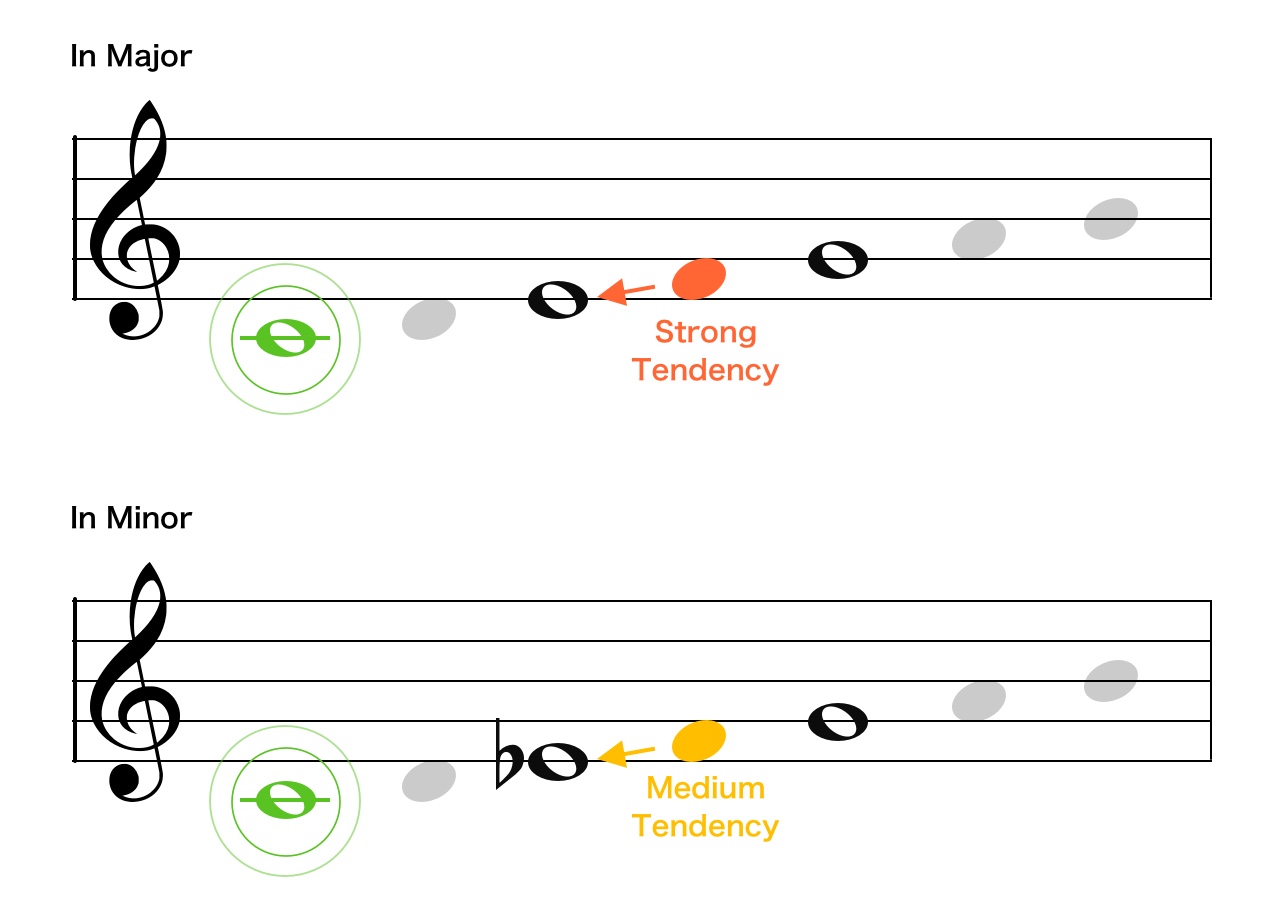As you rightly pointed out, there is often a claim that the overtone series provides a basis and the overtone series may serve as a “a piece of the puzzle” of tendency. However, many issues remain unresolved. Chief among them is how to explain the minor scale.
Taking the C minor scale as an example, in this scale, the F note is considered to have less tendency because both neighboring notes are a whole tone away. (This is actually mentioned in “Great Songwriting Techniques” too.)
However, purely in terms of the relationship between F and the tonal center, which is C, this remains consistent with the major scale; F is still distantly related as the 21st overtone.
Thus, we can see that a change in tendency occurs depending on the neighboring tones. Therefore, it becomes evident that the concept of tendency involves the entire structure of the scale and cannot be simply explained by the frequency ratios or the overtone order of just two tones (a tone vs the center).
Similarly, in the C minor scale, A♭ exhibits a strong tendency while F with a medium tendency. But comparing their order in overtone series, A♭ is the 13th (though large errors are acknowledged) and F is the 21st. Here, the pattern is reversed and the law is disrupted.
Another question arises: If the overtone series were the sole determining factor, wouldn’t it be contradictory if the ti♭ (the 7th overtone) or fa♯ (the 11th overtone) were not stable?
Of course, non-diatonic tones should not stabilize within diatonic tonality. However, this implies that the specific “context” of tonality, which is not something that exists as physical sound waves, influences our cognition. Therefore, the conclusion remains that explaining everything solely through the overtone series will not work. Things are not that straightforward.
What I believe to be an appropriate understanding at this point is; the tendency theory relies on the highly fundamental “axiom” of chord theory that “tertian chords are stable”.
In chord theory, even though the stability of major chords can be theoretically explained by the overtone series, this does not apply to minor chords. This parallels the discussion of tendencies, where hypotheses that work well in a major scale fail in minor.
Currently, theories regarding stability and harmony are being debated as culturally dependent, so it would be premature to hastily conclude tendencies as purely physical properties.
